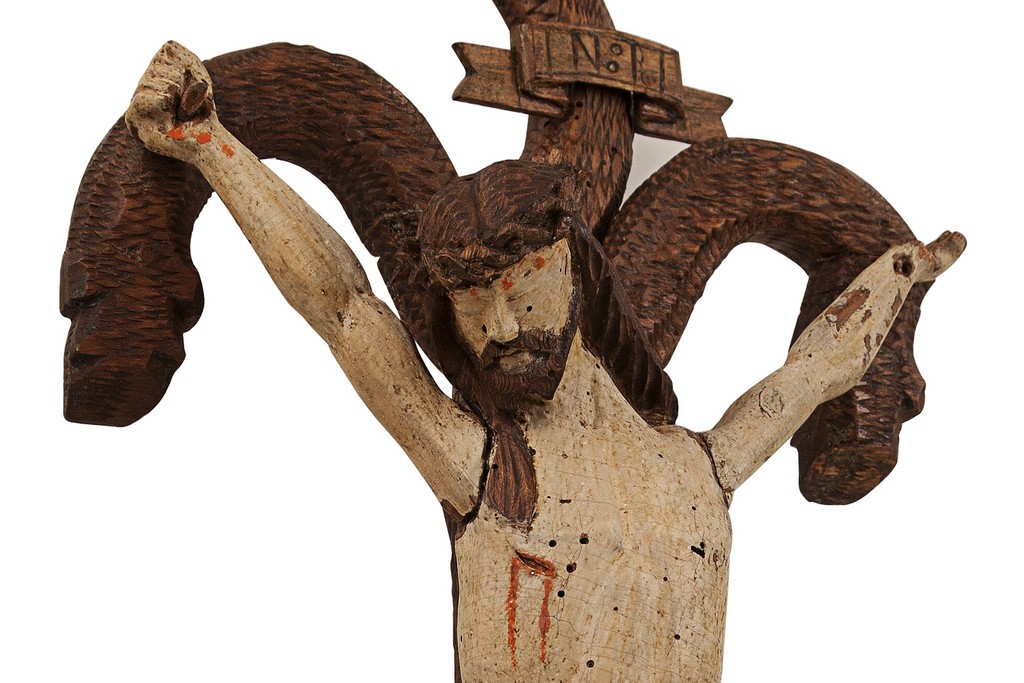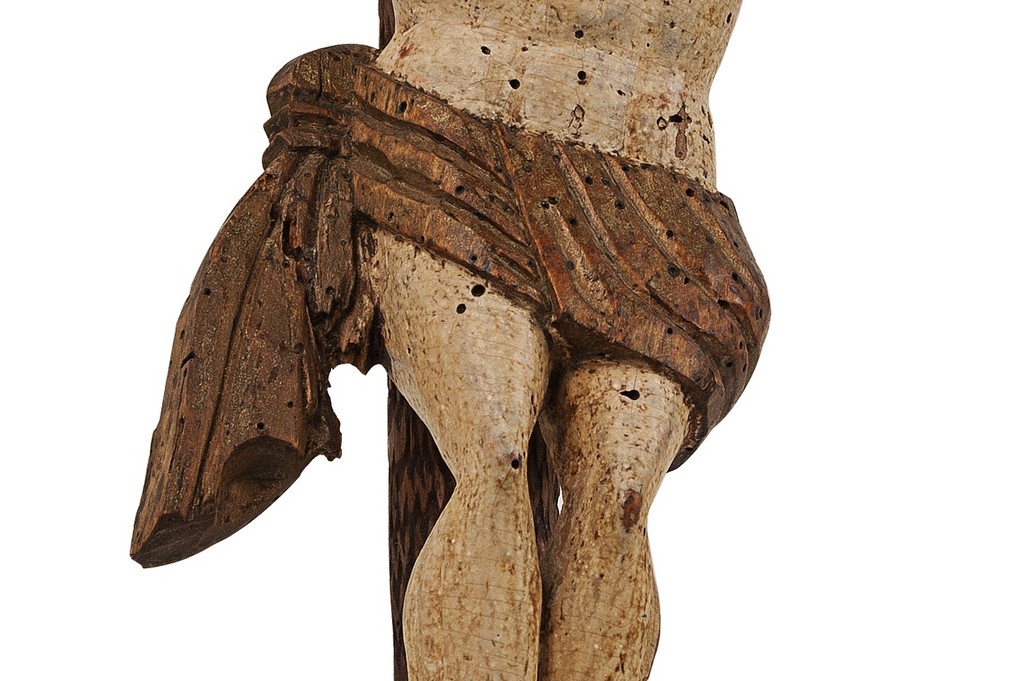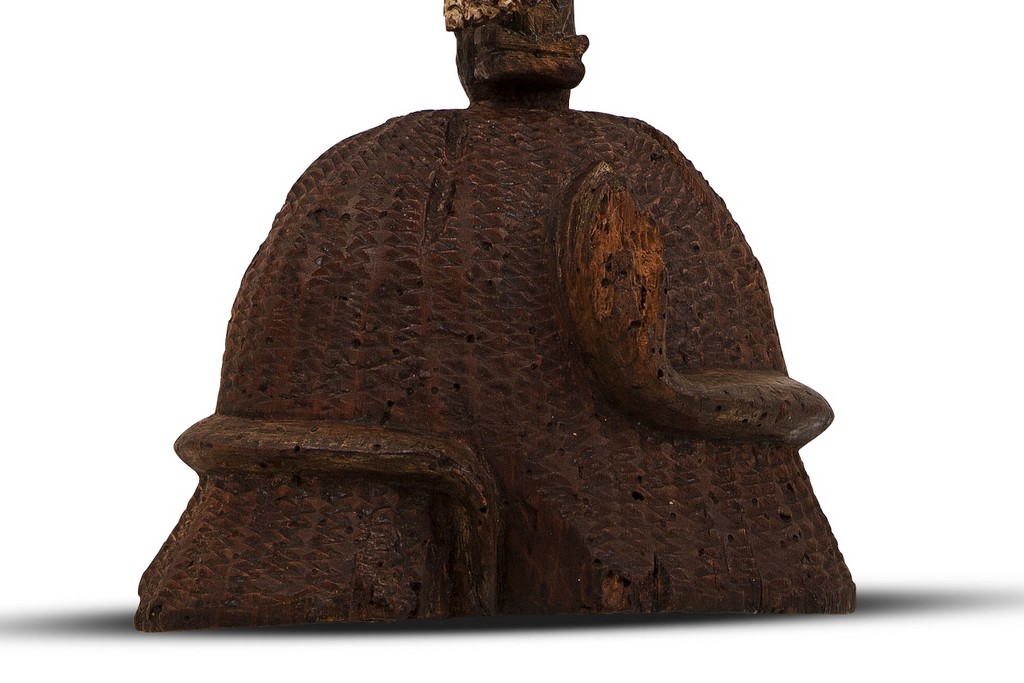Crucified on a tree (by Tomasz S.)
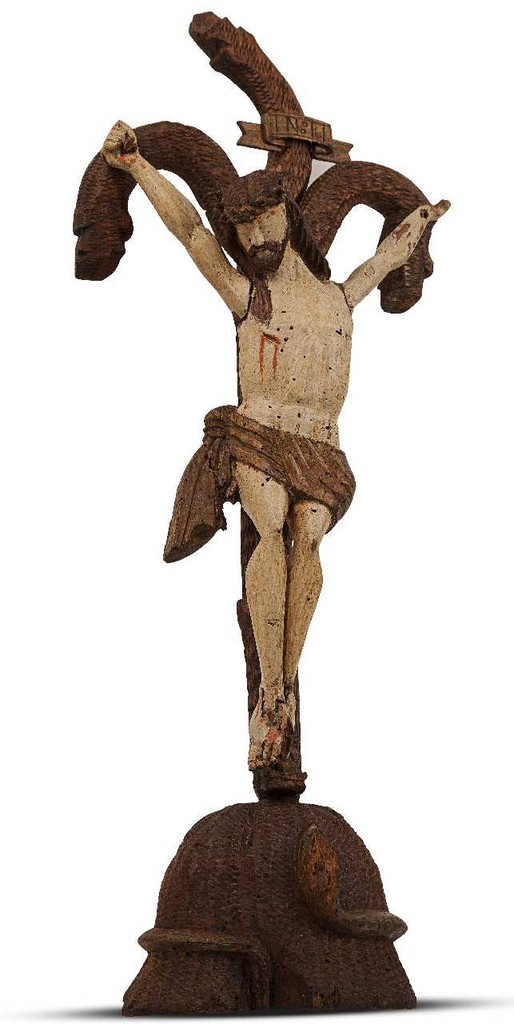
Whenever I visited my older friend in a village in the region of Cujavia (Poland) my gaze shifted quickly towards the window in the library room. On the window sill stood in fact a remarkable crucifix with Christ nailed to the Cross whose form was not known to me. Here Christ was crucified on a tree with three thick branches, two of which leaned to sides and accepted the nails piercing the Christ's hands, and the middle bough bearing a sign with letters INRI.
The whole crucifix was thickly covered with brown paint. The friend told me that he had received the crucifix from a lonely old woman with information that it had been in her family for hundreds of years. At this point I must say that my old friend was a forester with very broad interests, a fearless patriot, a great storyteller and a lover of hunting dogs. Even then when I met him almost 50 years ago, in addition to 50 dogs he had a very interesting private museum. His patriotism, deep concern for relics of the past and selflessness aroused confidence and meant that people willingly enlarged the museum collection donating valuable objects.
My friend’s wish was that after his death the crucifix comes under my care, and that did happen in 2012. Soon afterwards, the skillful hands of an art restorer removed the brown paint to reveal the well-preserved original polychromy on the Corpus Christi. The renovated crucifix is now worshiped in our home.
Chaque fois que je rendais visite à un vieil ami qui habitait un village dans la région de Cujavie (Pologne) mon regard se tournait rapidement vers la fenêtre de sa bibliothèque. Sur le rebord de la fenêtre se trouvait un crucifix remarquable avec le Christ cloué sur une Croix dont la forme m’était inconnue : le Christ était crucifié sur un arbre à trois branches épaisses dont deux s’écartaient sur les côtés et recevaient les clous qui avaient perçé les mains du Christ ; la branche centrale portant une pancarte avec les lettres INRI.
Le crucifix avait été abondamment recouvert d’une peinture brune. Mon ami m'a confié qu'il avait reçu le crucifix d'une vieille femme solitaire. Le crucifix était conservé dans sa famille depuis des centaines d'années. Mon vieil ami était un forestier dont la personnalité était digne d’intérêts, un patriote courageux, un grand conteur et un amoureux des chiens de chasse. Déjà quand je l'ai rencontré la première fois il ya près de 50 ans, en plus de ses 50 chiens, il avait constitué un musée privé très intéressant. Son patriotisme, sa profonde préoccupation pour les vestiges du passé et son altruisme suscitaient la confiance et les gens spontanément lui apportaient des objets dont certains de valeur afin d’élargir ses collections.
Le souhait de mon ami fût qu’après sa mort le crucifix me soit confié. Sa mort intervint en 2012. Peu de temps après, j’ai confié le crucifix aux mains habiles d'un restaurateur d'art qui a éliminé la peinture brune et a révélé la polychromie originale et bien conservée sur le Corpus Christi. Le crucifix rénové est maintenant vénéré dans notre maison.
Un serpent encercle ce monticule. La partie inférieure du tronc de l'arbre présente quatre départs de branches mortes coupées, tout cela dans la tradition médiévale pour signifier que les branches de la Croix ont été fabriquées avec l'Arbre de la Connaissance et que le Golgotha était le lieu de sépulture d'Adam. Cependant, sortant de la partie haute du tronc mort ont germiné comme des bourgeons frais les trois branches courbes de l'Arbre de la Vie éternelle.
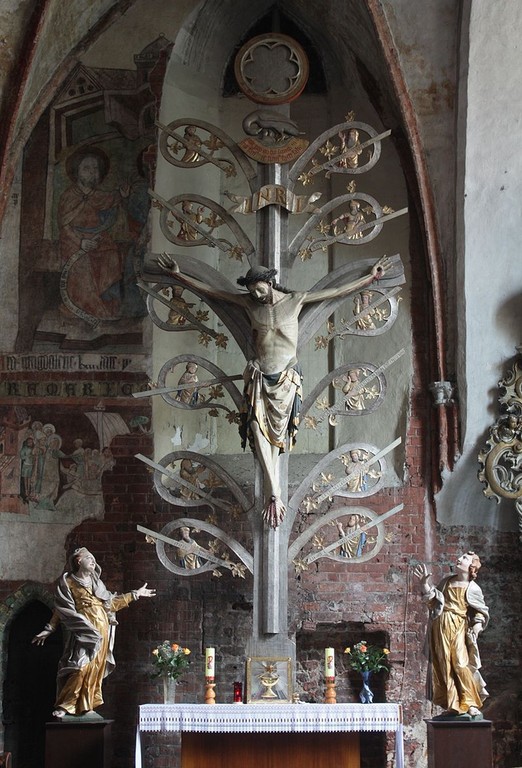
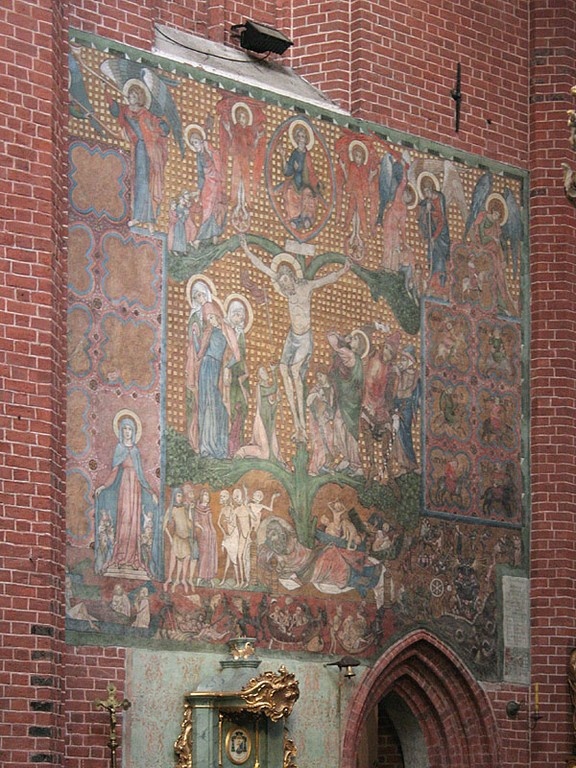
Publié le 23 décembre 2015
